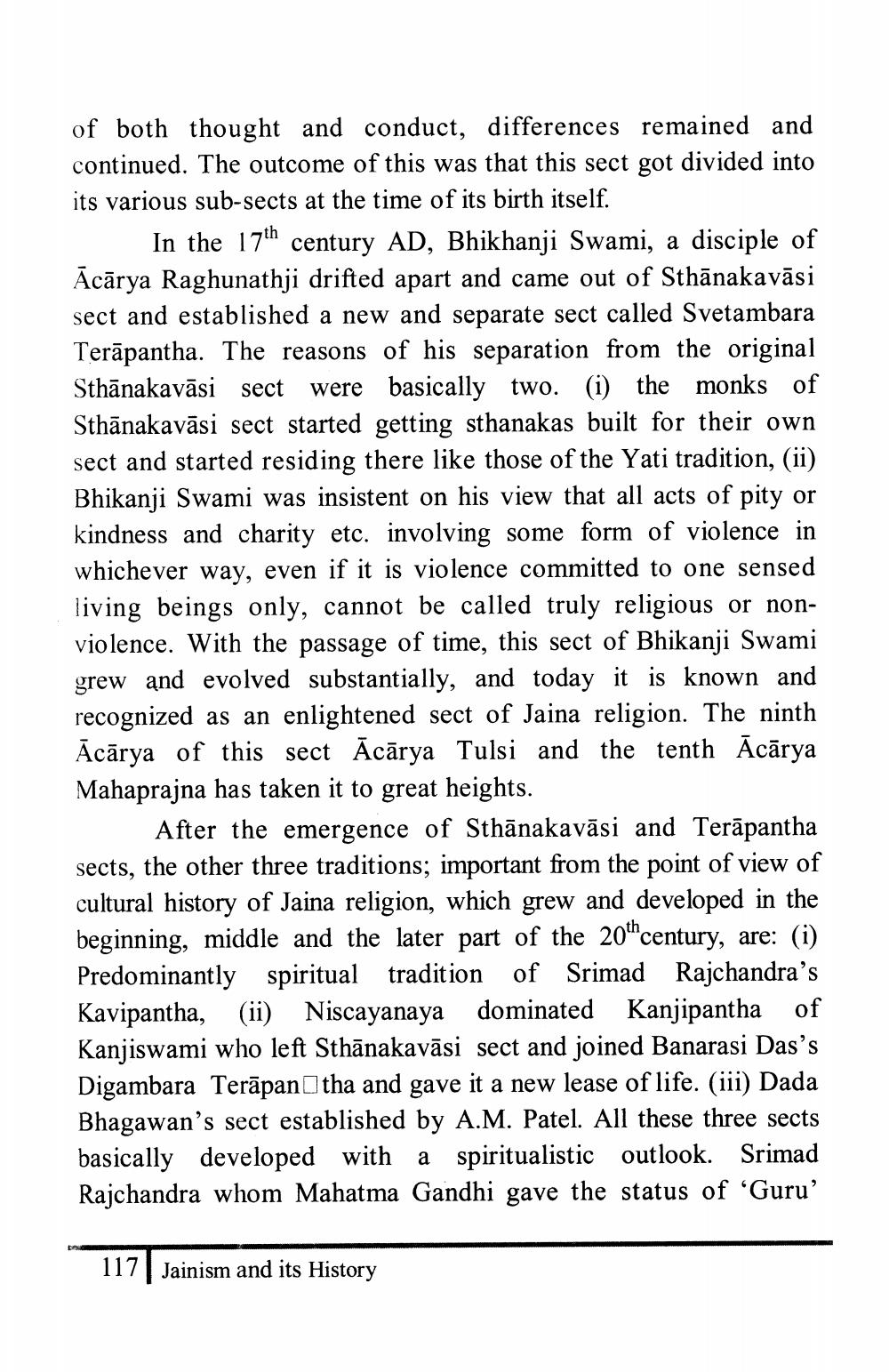________________
of both thought and conduct, differences remained and continued. The outcome of this was that this sect got divided into its various sub-sects at the time of its birth itself.
In the 17th century AD, Bhikhanji Swami, a disciple of Ācārya Raghunathji drifted apart and came out of Sthānakavāsi sect and established a new and separate sect called Svetambara Terāpantha. The reasons of his separation from the original Sthānakavāsi sect were basically two. (i) the monks of Sthānakavāsi sect started getting sthanakas built for their own sect and started residing there like those of the Yati tradition, (ii) Bhikanji Swami was insistent on his view that all acts of pity or kindness and charity etc. involving some form of violence in whichever way, even if it is violence committed to one sensed living beings only, cannot be called truly religious or nonviolence. With the passage of time, this sect of Bhikanji Swami grew and evolved substantially, and today it is known and recognized as an enlightened sect of Jaina religion. The ninth Acārya of this sect Acārya Tulsi and the tenth Acārya Mahaprajna has taken it to great heights.
After the emergence of Sthānakavāsi and Terāpantha sects, the other three traditions; important from the point of view of cultural history of Jaina religion, which grew and developed in the beginning, middle and the later part of the 20thcentury, are: (i) Predominantly spiritual tradition of Srimad Rajchandra's Kavipantha, (ii) Niscayanaya dominated Kanjipantha of Kanjiswami who left Sthānakavāsi sect and joined Banarasi Das's Digambara Terāpanātha and gave it a new lease of life. (iii) Dada Bhagawan's sect established by A.M. Patel. All these three sects basically developed with a spiritualistic outlook. Srimad Rajchandra whom Mahatma Gandhi gave the status of “Guru'
117 | Jainism and its History




